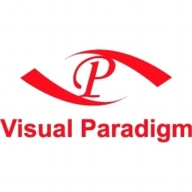

Mood and Visual Paradigm compete in modeling and design software. Mood is preferred for cost-effectiveness and customer support. Visual Paradigm offers a comprehensive feature set justifying a higher price point.
Features: Mood is simple and easy to use, ideal for straightforward modeling tasks. Visual Paradigm offers advanced modeling tools and integrations for complex design requirements.
Ease of Deployment and Customer Service: Mood provides seamless deployment with robust customer service. Visual Paradigm has thorough documentation and support aiding complex deployments.
Pricing and ROI: Mood offers competitive pricing and substantial ROI for small to medium enterprises. Visual Paradigm, though more expensive, delivers ROI with its extensive features for businesses needing advanced tools.
| Product | Market Share (%) |
|---|---|
| Visual Paradigm | 5.6% |
| Mood | 0.3% |
| Other | 94.1% |

| Company Size | Count |
|---|---|
| Small Business | 15 |
| Midsize Enterprise | 5 |
| Large Enterprise | 7 |
Mood offers insightful tools designed to enhance employee engagement and monitor workplace well-being through real-time analytics. Its advanced functionalities support organizations seeking to understand and improve their work environment effectively.
Mood stands out by providing an intuitive platform that captures vital employee feedback. By utilizing precise analytical tools, it aids organizations in identifying trends and areas for improvement within their teams. Its streamlined approach encourages open communication and fosters a more cohesive workplace culture. With Mood, users can easily implement ongoing improvements based on detailed insights and data-driven recommendations.
What are the key features of Mood?Mood is effectively implemented within industries like healthcare and technology, where understanding employee sentiments rapidly impacts service quality and innovation. Its flexible survey mechanisms and real-time data analysis cater to dynamic industry environments, facilitating a proactive approach to workforce management.
We monitor all Business Process Design reviews to prevent fraudulent reviews and keep review quality high. We do not post reviews by company employees or direct competitors. We validate each review for authenticity via cross-reference with LinkedIn, and personal follow-up with the reviewer when necessary.